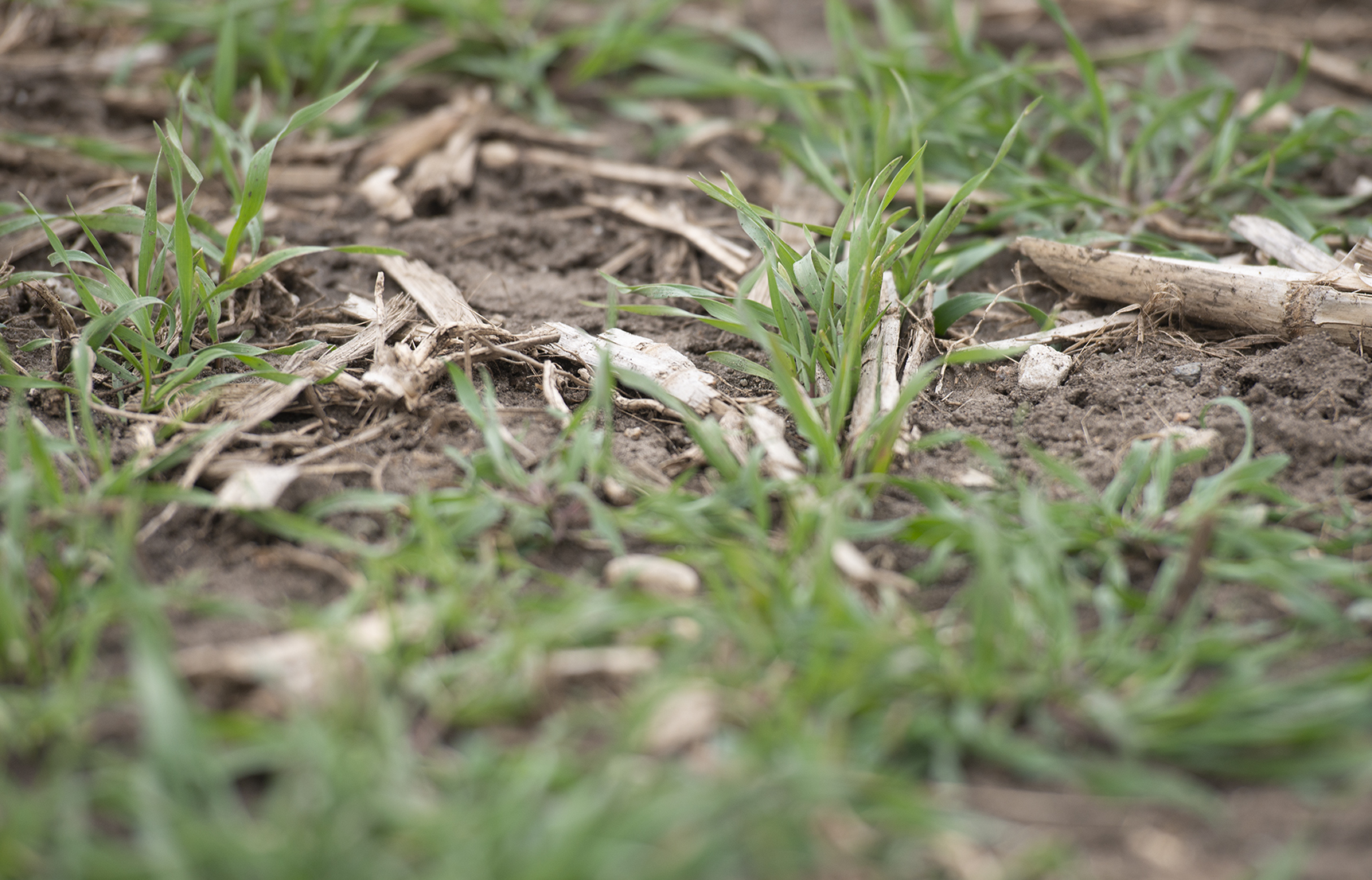
There's a lot to learn when it comes to cover crops. ISA's Cover Crop Economic Simulator can help provide answers. (Photo: Joseph L. Murphy/Iowa Soybean Association)
Answers to farmers’ top 10 questions about the Cover Crop Economic Simulator
April 8, 2021
By Darcy Maulsby, an ISA Communications contributor
Wouldn’t it be handy to have a quick, easy tool to figure out the economic value of cover crops on your farm? The Iowa Soybean Association’s Cover Crop Economic Simulator makes it simple.
“Cover crops have the potential to be a financial asset, when managed well,” said Suzanne Fey, an Iowa Soybean Association (ISA) data analyst. “The online Cover Crop Economic Simulator helps you determine which management strategies will pay in your operation.”
During a recent ISA Innovation TO GO! webinar on April 7, farmers were invited to ask questions about the simulator and receive live answers from ISA’s Research Center for Farming Innovation (RCFI) staff, including Fey and Peter Kyveryga, sr. research scientist for analytics. You can watch the recordings of this webinar below.
1. How do I access the Cover Crop Economic Simulator?
Go to www.iasoybeans.com, and click on the Research tab. Select the Results and Tools link in the dropdown menu. Then click on the Cover Crop Net Return Economic Simulator link. From there you can launch the tool or watch a “how to” video about the simulator. You can also access the tool by clicking here.
2. How does the simulator’s dynamic net return feature work?
Enter your field size (in acres), and the cash crop (soybeans or corn) you’ll plant after the cover crop. You also enter the average yield of the crop for this field, and an estimated market price for the cash crop (soybeans or corn). The tool provides the basic cost to establish four of the most common cover crops in Iowa. “All these categories can be edited, so you can more closely match the numbers to your farming operation,” Fey said. This lets you address the dynamics of yield variability, market price fluctuations and more on net return. As you enter data, you can track net costs and net revenues. Any changes on a page will instantly update the net return value and sensitivity analysis grid values.
3. How much does it cost to use the Cover Crop Economic Simulator?
It’s free! There is no user fee. This is made possible by the soybean checkoff and partners of the Iowa Soybean Association.
4. Can I figure out how close my farming operation is to using cover crops profitably?
Yes. The simulator lets you run the numbers for income opportunities related to cover crops, including grazing, harvesting forage or, in some cases, harvesting seed. It shows some key cost mitigation opportunities related to cover crops, including state and federal assistance and new EcoSystem Services payments. The simulator can also assign a dollar value if you select cost mitigation opportunities like improved organic matter, improved water retention and reduced erosion.
5. How can I measure erosion reduction?
Soil loss by erosion drops by approximately 50% where cover crops are grown. It’s not a one-size-fits-all proposition, though. “Erosion reduction is an important, cumulative benefit of cover crops, but it varies by year and location,” said Fey, who noted that the value of farmland also varies by location. The simulator offers two maps for estimating your location’s erosion reduction. Maps show average erosion values between 2007-2020 calculated by Iowa State University through the Daily Erosion Project. The county layer shows 2020 county average land values. “Land appraisers may not take erosion or soil health into account when they value farmland, but bankers see costs required to produce yields,” Fey said. “Farmers see qualitative differences from the cab of their pickup, including bald hilltops, sediment in grass waterways and ephemeral gullies.”
6. Is fertilizer cost reduction figured into the simulator?
Not currently, but ISA plans to add a fertilizer line item soon. Advisory team members who have helped refine the tool’s features say they’ve been able to decrease fertilizer application rates with no negative impact on yield. They have recommended we add optional fertilizer reduction to the cost to establish cover crop formula.
7. Does the simulator consider the cost between aerial and ground seeding?
“The default cost value in the simulator for seeding cover crops is $15 an acre,” Fey said. “You can change this, depending on how much it costs you for ground seeding or aerial seeding.”
8. Can I print out the data from the simulator?
ISA’s analytics team is working on adding a feature so you can print PDFs of your data. “For now, you can make a screen capture to print your data,” Fey said.
9. Is this tool just for farmers?
No. The simulator can also be a good communication tool when you’re talking with landowners, Fey said. “You can show how much soil erosion is costing the operation and discuss programs to help pay for cover crops to keep the landowners’ soil from going into the ditch.”
10. What’s the “Added Value for the Greater Good” section in the simulator?
This shows the big picture of cover-crop economics. “These values are more difficult to tie back to individual fields, but they get people thinking about more than just their own bottom line,” Fey said. There aren’t widely recognized per-acre values for reduced water purification costs, reduced water pollution, safer water for recreation and wildlife, reduced flooding, reduced insurance costs, benefits for future generations and other advantages that come from cover crops. “These values don’t impact the dynamic net returns on page 1 of the simulator,” Fey said. “They’re included as tangible benefits in the Added Value for the Greater Good section since they impact local communities and society as a whole.”
Start using the Cover Crop Net Return Economic Simulator now.
April 7, 2021 Morning Webinar
April 7, 2021 Afternoon Webinar
Back